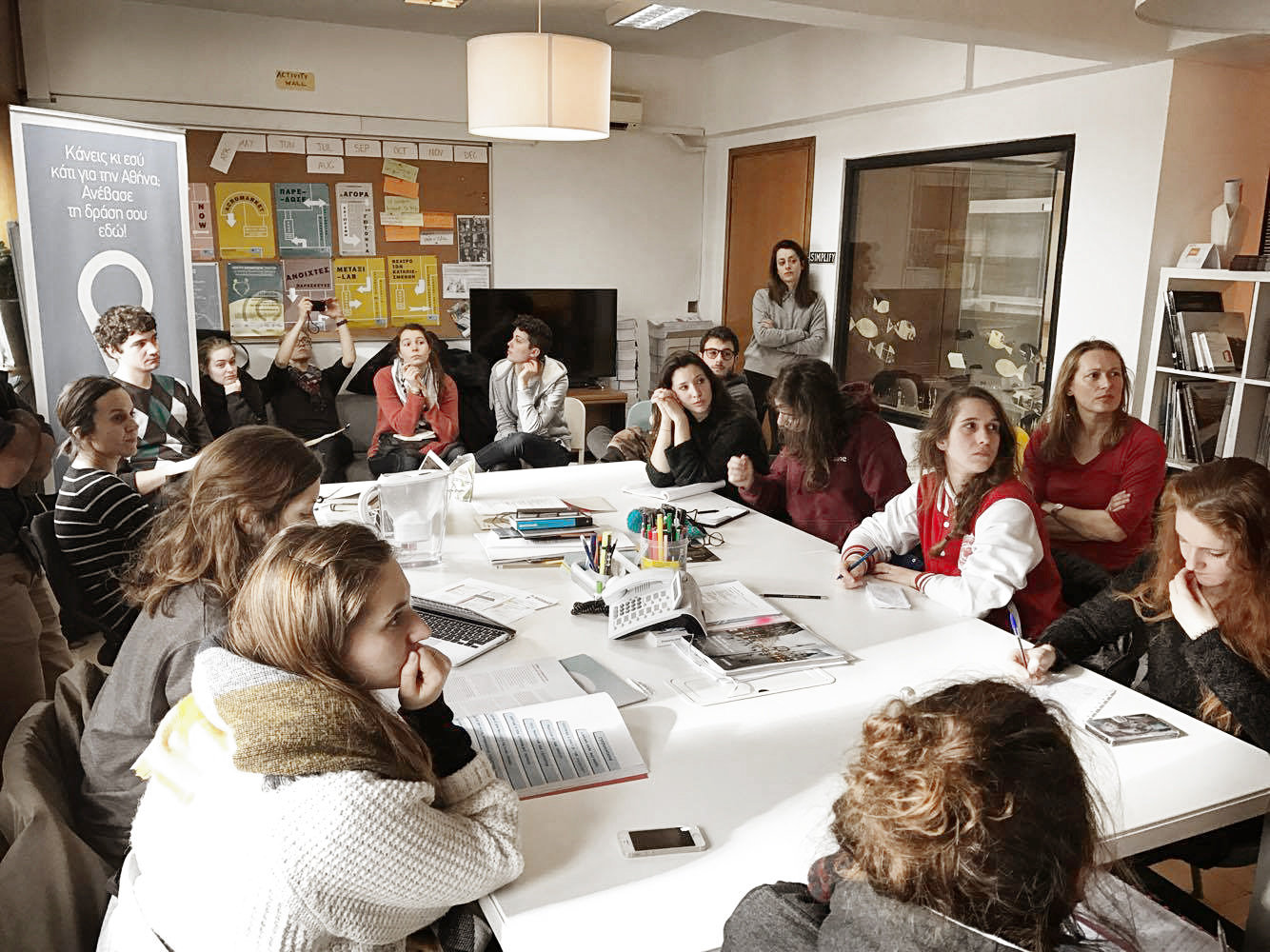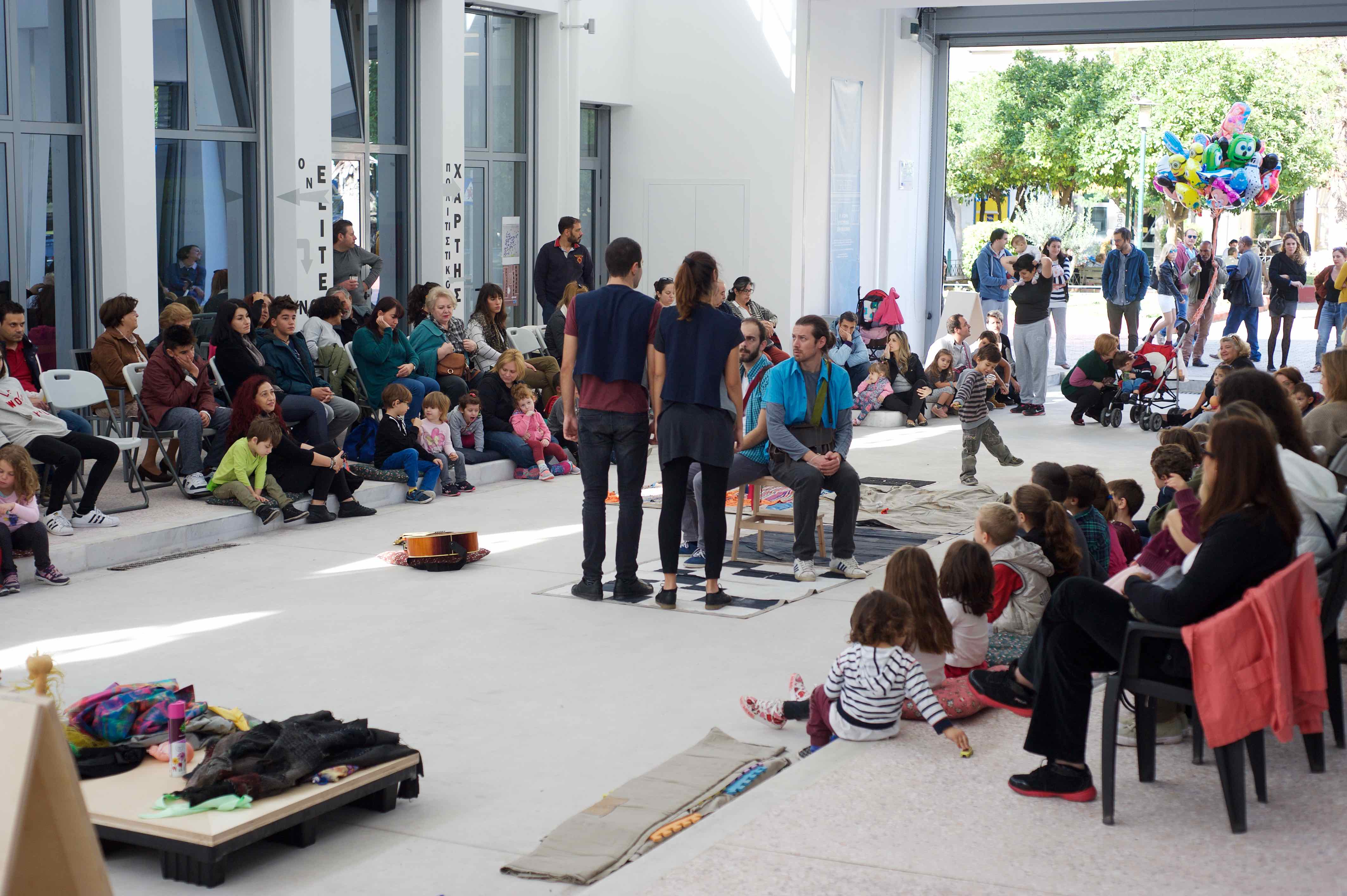Uniting for a Better Athens


Athens, Greece
The Action
SynAthina is a City of Athens initiative that uses a variety of flexible strategies and resources to map and improve the capacity of civil society organizations (CSOs) and to work with them to address resident needs. Launched in July 2013 by the Vice-Mayoral Office for Social Solidarity and Civil Society, SynAthina is now an independent entity funded by the City of Athens.
There are three main components to SynAthina: an online platform, a building (open all day, year-round) that the city makes available for use by CSOs, and a recently added mobile unit that they can use to take their work out of the city center and into neighborhoods in need. The city is in the process of upgrading both its physical and online spaces and hopes to have these changes completed by mid-2022.
The challenges that the groups tackle vary, but include the use of public space, education, economic growth, youth, the environment, culture, technology, tourism, heath, and refugee integration. Refugee integration has until recently been the most pressing issue, but responses to the side effects of the coronavirus pandemic (particularly efforts to help the vulnerable and isolated) have become the top priority in the past two years.
Democracy Challenge
In the wake of the economic crisis of the early 2010s, the city’s need to rebuild lost confidence in government was extremely urgent. Austerity measures reduced the operational capacity of Athens’ city government, and this (combined with an unprecedented influx of refugees) put the city in a crisis situation as it increasingly struggled to meet residents’ needs. In order to restore trust in government, which is a requisite for democracy, the city was forced to form innovative new partnerships that could help it do more with less.
How It Works & How They Did It
Despite the challenges Athens faced under austerity, CSOs continued to step in to provide much needed assistance to those in need. In 2013, the Vice-Mayoral Office for Social Solidarity and Civil Society decided that the best way forward was to work with these organizations—which had until then had a very limited relationship with the city—to combine their expertise and resources so they could do more with less. Though some organizations were initially wary of this arrangement, fearing that the city would take over rather than supplement their work, the city ultimately gained their trust and has faced virtually no opposition since.

SynAthina’s basic premise is as follows: local organizations have a strong understanding of residents’ experiences and conditions on the ground in Athens’ various neighborhoods. This means that they can bring problems (and current non-governmental solutions) to the city’s attention. This allows the city to work with them to identify how they can supplement the good work that is already being done, with time, staff, technical expertise, volunteers, space, and, if necessary, funding. This partnership also makes the city more efficient by giving civil society an opportunity to make officials aware of institutional barriers to success, prompting the city to adjust political priorities, update regulations, and simplify procedures.
How’s It Going?
SynAthina’s unique approach has led to thousands of creative and innovative ideas that otherwise might not have come to fruition, including co-designed neighborhoods, repurposed abandoned buildings, and new approaches to forging social cohesion. Since launching in 2013, SynAthina has hosted 4,268 activities led by 454 groups of citizens and institutions in cooperation with 153 sponsors. The data collected at these events have informed the city of the residents’ priorities, leading to a better allocation of resources.

One of the key features of SynAthina is its online platform. The platform features a map of citizens groups and their activities that keeps the public, CSOs, project sponsors (including international organizations like Bloomberg Philanthropies and the International Rescue Committee), universities, and city offices aware of the different projects currently underway and who is leading them. It also allows the city to identify the role it can play in each activity, providing space (often in SynAthina’s new building, which is available for reservations), promoting the event, recruiting volunteers, and more. The map also makes it easier for groups to identify opportunities to collaborate on common goals.
Highlighted Projects
While SynAthina’s projects cover all sorts of topics, the top two areas of focus before the pandemic were poverty reduction and refugee integration. One great example was the Curing the Limbo initiative, which went beyond providing for refugees’ basic needs and focused on making them feel welcome and part of their community. The initiative brought new and established residents together for a variety of activities, such as cooking classes and planting trees, and provided a variety of services like counseling and help in finding housing.
The pandemic created a new crop of problems for the city to address. In addition to the public health crisis, there has also been a mental health crisis, as groups that were already marginalized have struggled with isolation. One initiative that roughly translates to “Help at Home” reaches out to those who are most vulnerable to the pandemic (particularly the elderly and people with special needs) to address not only their material concerns but their social and mental health needs as well. The project deploys teams of mental health professionals, social workers, and neighbors to identify and help those who are struggling.
Considerations
- Start with a map: Understanding what organizations are out there, what they do, and who they work with is a critical first step in building a program like SynAthina. Once you understand what is being done already, figuring out next steps and a long-term strategy becomes much easier.
- Build the network: If the city has not worked closely with CSOs in the past (or has only worked with some of them), it may take time to gain their trust. It is critical to reassure these groups that the role of the city is to support their work, not take it over. Once this was made clear in Athens, CSOs proved to be enthusiastic and indispensable partners!
Point of Contact
Katerina Gagaki
Vice-Mayor for Social Solidarity and Civil Society
City of Athens
[email protected]
+0030 210-5210-610
Who Else Is Trying This?
- West Yorkshire, England: In 2017, the Kirklees Council in West Yorkshire launched Comoodle, a digital platform that promotes a sharing economy for individuals and organizations to access resources, promote community, and help local government to address the needs of its constituents with fewer resources.
- Lodi, California, US: Organized by the Lodi Chamber of Commerce and City of Lodi, the ABCD Love Your Block project connects individuals and groups with local resources and trains them to develop their own community improvement initiatives.
- Washington, DC, US: Connected Community is an initiative by the city to help connect conferences held in the area with communities and organizations that share a similar mission. They have a special focus on sustainability initiatives.